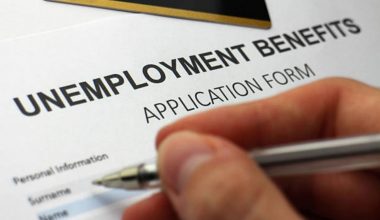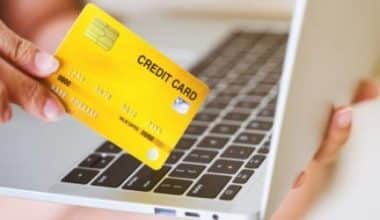A personal financial statement is a document, or group of documents, that summarizes an individual’s financial situation at a specific moment. It is often divided into the balance sheet and the income flow. Although more complex personal financial statements can be used, this essay will focus on a simplified version. Individuals new to using personal financial statements to record their finances should start with the format provided in this article.
What is a Personal Financial Statement?
A personal financial statement is a spreadsheet containing vital information about an individual’s or business’s assets and liabilities. The spreadsheet typically consists of two columns, with the assets listed on the left and liabilities on the right.
A personal financial statement separates assets and liabilities. The value of securities and monies kept in checking or savings accounts, retirement account balances, trading accounts, and real estate are all examples of assets. Individuals’ liabilities include any debts they may have, such as personal loans, credit cards, student loans, delinquent taxes, and mortgages. Debts that are held jointly are also listed. By pooling their assets and obligations, married couples can generate joint personal financial statements.
If the statement is used to obtain credit or to reflect someone’s general financial situation, income and expenses are also provided. The income statement is a separate page or an amendment that tracks this. This encompasses all types of revenue and expenses, which are often expressed in monthly or yearly quantities.
A personal financial statement does not include the following items:
#1. Business assets and liabilities
Business assets and liabilities are not included unless the individual is directly and personally liable for them. As a result, if someone personally guarantees a loan for their business (akin to cosigning), the loan is reflected on their personal financial statement.
#2. Rented items:
Because the assets are not owned, they are not included in personal financial statements. This is different if you own the property and rent it out to others. In this situation, the property’s value is included in your asset list.
#3. Personal property:
Items like furniture and household goods are often not shown as assets on a personal balance sheet because they cannot be easily sold to pay off a loan. Personal goods with high monetary value, such as jewels and antiques, may be included if their worth can be proven by an appraisal.
Business obligations are only disclosed in a personal financial statement if an individual provides a personal guarantee to the creditor.
Keep this in mind. When it comes to receiving new credit, your credit report and credit history are important factors to consider, and each lender has distinct standards for giving credit. Even if you have a positive net worth (more assets than obligations), you may be denied a loan or credit card if you have not paid prior debts on time or have too many inquiries on file.
How Do I Fill Out a Personal Financial Statement?
Step #1: Choose The Appropriate Program
If you are decisive in choosing the appropriate program, you can seek help from a Financial Advisor. After choosing the appropriate program, you must complete the information at the top of the personal financial statement.
Step #2: Fill In Your Personal Information
When you have chosen the appropriate program, the top box on page two asks for your personal information. Such as your name, house address, and questions about the business. If the statement is for yourself and your spouse, include identifying information for each of you.
You also must remember that every owner or member who owns 20% or more of the company must complete SBA form 413.
Step #3: Write Down Your Assets
This Particular section may take you some time. However, this depends on the many assets you have. If you are married, you need to include the value of your spouse’s assets.
Step #4: Write Down Your Liabilities
Right next to the assets box is the liabilities section on the document. This is where you will record your liabilities and those of your partner.
Step #5: Fill Out The Notes Payable To Banks and Other Sections
This section provides more details on the banknotes you listed in the liabilities box. These include the name of the account holder, your balance, and information regarding the balance. The original balance would be $0 for credit cards and lines of credit.
Step #6: Fill out the Stocks and Bonds Section
In this section, there would be a need to provide further details on the banknotes you listed in the liabilities box. This includes the account holder’s name, balance, and other information. The original balance would be $0 for credit cards and lines of credit.
Step #7: Complete the Real Estate Owned Section
Earlier in section 4, you provided more details about your real estate.
This would lead you to record the type of residence, address, and date you bought the property. Also, the purchase amount, the current market value, and the mortgage holder should be there, including the mortgage account number and the remaining balance on your mortgage—the amount you pay monthly or annually and the status.
Step #8: Go back and Complete Sections 5-8 on pages 3 and 4
In section 5, you will have to list any other assets you have. If any lienholders are involved, and the approximate value of the assets. Do not intentionally overestimate or underestimate the value. Try to research and find an approximate value.
Step #9: Certify Your Application
The final step is to sign your SBA form 413. This gives certification that you are not intentionally withholding any information. Also, it shows that you have filled out this form as accurately as possible, under penalty of civil prosecution. If you are married, you and your spouse must sign, date, and write down your SSNs.
Do I Need a Personal Financial Statement?
Personal financial statements assist individuals in understanding the overall state of their personal or business finances. This calculates their total net worth. They can also be used as a tool when applying for credit—for example, a mortgage, business loan, or personal loan. So, creating a personal financial statement is a good idea to get a snapshot of your financial health.
Personal Financial Statement Forms
Personal financial statements are written records of an entity’s business activities and financial performance. It provides an overview of assets, liabilities, and shareholders’ equity as a snapshot in time.
It is also referred to as a document of your financial position at a specific time.
What are examples of Personal Financial Information?
There are many examples of personal financial information, some of them include ;
- Balance sheets
- Income statements
- Cash Flow statements
#1. Balance Sheets
A balance sheet provides information about an individual or a company’s assets and liabilities. When a financial balance sheet is applied, it can illustrate if you’re on the right path to accomplish your own goals. Such as getting out of debt by showing you your net worth. Also, what debts do you have to repay, and how much you are worth?
#2. Income Statements
This is a report that shows how much revenue a company has earned over some time. An income statement also gives you a summary of expenses and costs associated with the earnings of that revenue.
An income statement also shows whether you are making a profit or running at a loss.
#3. Cash Flow Statements
Cash flow statements show individual inflows and outflows of cash. It also monitors cash flow and helps you know if you’re generating money. This financial statement provides aggregate data regarding all cash inflows a company receives from its ongoing operations and external investment sources.
All these examples help you understand your financial health.
Why Should You Utilize a Personal Financial Statement?
A personal financial statement can be a very useful tool in budgeting. It is typically goal-oriented and can assist an individual in meeting financial objectives, particularly for young professionals entering the workforce for the first time. The majority of these folks are new to financial planning, and a basic personal financial statement is a good place to start.
Why Make an Excel Personal Financial Statement?
- It is simple to add entries, make modifications, and so on.
- Cloud services, such as iCloud or Google Drive, enable users to see their financial statements from anywhere.
- As a person develops experience in financial planning, he or she can use the capabilities provided by MS Excel for financial planning.
What is a Personal Financial Plan?
A personal financial plan is a comprehensive plan which projects many years into the future. A financial plan protects you from life’s surprises. Also, including details about your income, savings, investments, expenditures, and debts. What exactly does a financial plan consist of? They include:
- It isn’t just for those with a lot of money.
- A financial plan protects you from life’s surprises.
- It helps you pay off any debt, an emergency fund, and retirement.
- It is a comprehensive plan which projects many years into the future.
- It includes details about your savings, investments, income, expenditures, and debt
Is It Worth Paying For a Financial Advisor?
A financial advisor is a person who holds a Chartered Financial Analyst designation. On the other hand, you might decide to focus on investment advice. They could help with picking stocks or mutual funds. Also, they might help you with strategic portfolio or stock market analysis.
A financial advisor also gives valuable insight into what you should be doing with your money to reach your financial goals. These offers of their advice do not come for free. The typical advisor charges clients 1% of the assets that they manage. However, rates typically decrease when more money is invested. So you might be thinking about whether it’s worth paying a financial advisor. Well, that answer depends solely on you.
To Wrap It Up
Personal financial statements can also be used by individuals and companies
A personal financial statement is an important document because it gives you a summary of your building wealth. A personal financial statement can also play a critical role in helping you to get approved loans from companies or business organizations
Budgeting software is the most efficient way to keep your financial statement up-to-date. This keeps track of your net worth for you.
A personal financial statement is a document that shows a list of all assets and liabilities and which results in your total net worth
Related Articles
- WHAT ARE ASSETS AND LIABILITIES: Definition, Differences, and Examples
- WHAT IS AN INCOME TAX: Definition, Rate, and Types
- Balance Sheet vs. Income Statement: Examples, Differences & Relationship
- HOW DO FINANCIAL ADVISORS MAKE MONEY? What Does a Financial Advisor Do To Earn?
- INCOME STATEMENT: Formats, Examples, and How To Prepare One






